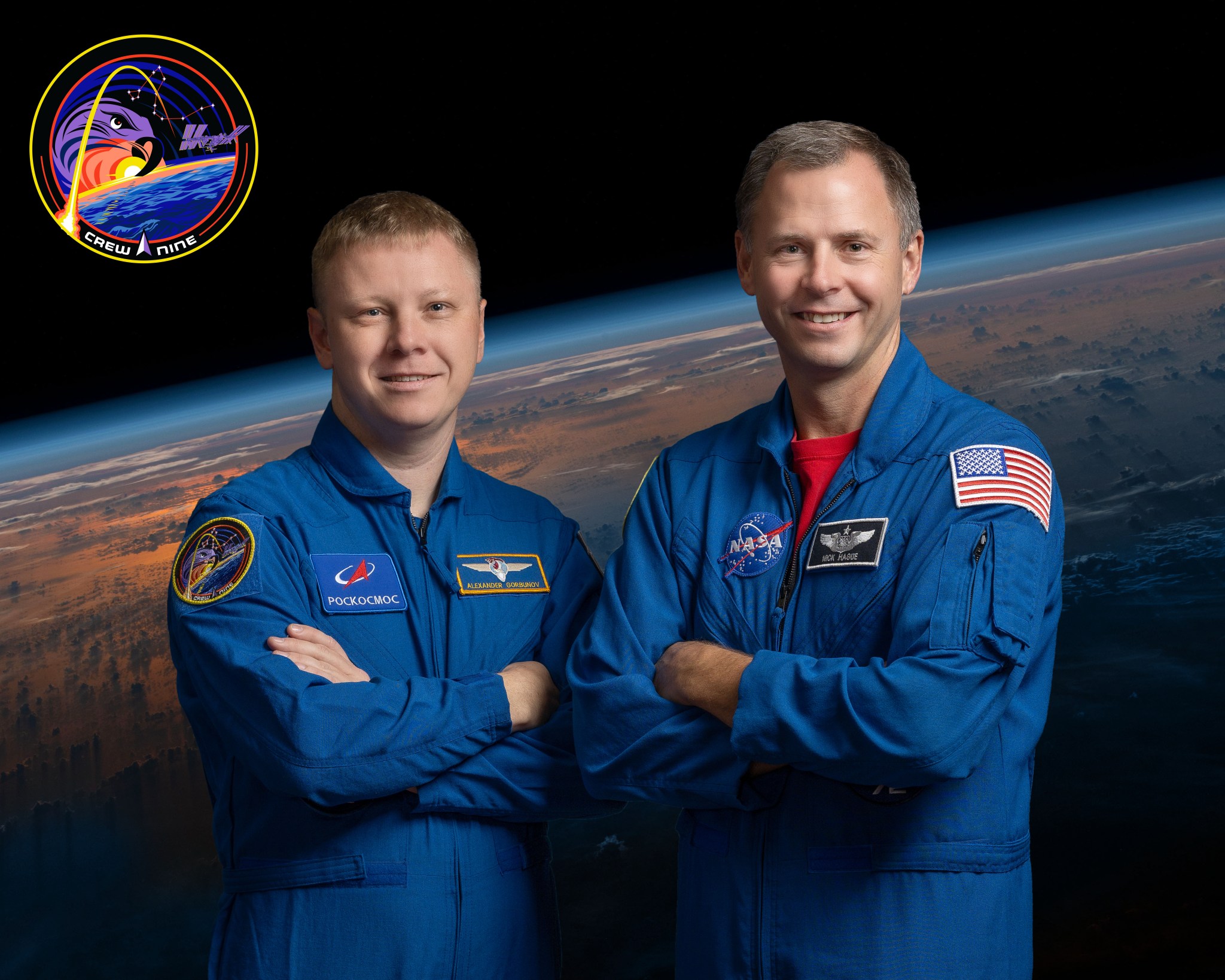NASA astronaut Nick Hague and Roscosmos cosmonaut Aleksandr Gorbunov are preparing to launch on the agency’s SpaceX Crew-9 mission to the International Space Station.
The flight is the ninth crew rotation mission with SpaceX to the station under NASA’s Commercial Crew Program. The duo will lift off aboard the SpaceX Dragon spacecraft, which previously flew NASA’s SpaceX Crew-4, Axiom Mission 2 and Axiom Mission 3, from Launch Complex 40 at Cape Canaveral Space Force Station in Florida.
Once aboard the space station, Hague and Gorbunov will become members of the Expedition 72 crew and perform research, technology demonstrations, and maintenance activities. The pair will join NASA astronauts Don Petitt, Butch Wilmore, Suni Williams, as well as Roscosmos cosmonauts Alexey Ovchinin and Ivan Vagner.
Wilmore and Williams, who launched aboard the Starliner spacecraft in June, will fly home with Hague and Gorbunov in February 2025.
Launch preparations are underway, and teams are working to integrate the spacecraft and the SpaceX Falcon 9 rocket, including checkouts of a second flight rocket booster for the mission. The integrated spacecraft and rocket will then be rolled to the pad and raised to the vertical position for a dry dress rehearsal with the crew and an integrated static fire test prior to launch.
Nick Hague will serve as crew commander for Crew-9, making this his third launch and second mission to the space station. During his first launch in October 2018, Hague and his crewmate, Roscosmos’ Alexey Ovchinin, experienced a rocket booster failure, resulting in an in-flight, post-launch abort, ballistic re-entry, and safe landing in their Soyuz MS-10 spacecraft. Five months later, Hague launched aboard Soyuz MS-12 and served as a flight engineer aboard the space station during Expeditions 59 and 60. Hague has spent 203 days in space and conducted three spacewalks to upgrade space station power systems and install a docking adapter for commercial spacecraft.
Born in Belleville, Kansas, Hague earned a bachelor’s degree in Astronautical Engineering from the United States Air Force Academy and a master’s degree in Aeronautical and Astronautical Engineering from the Massachusetts Institute of Technology in Cambridge, Massachusetts. Hague was selected as an astronaut by NASA in 2013. An active-duty colonel in the U.S. Space Force, Hague completed a developmental rotation at the Defense Department and served as the Space Force’s director of test and evaluation from 2020 to 2022. In August 2022, Hague resumed duties at NASA, working on the Boeing Starliner Program until this flight assignment.
Follow @astrohague on X and Instagram.
Roscosmos cosmonaut Aleksandr Gorbunov will embark on his first trip to the space station as a mission specialist for Crew-9. Born in Zheleznogorsk, Kursk region, Russia, he studied engineering with qualifications in spacecraft and upper stages from the Moscow Aviation Institute. Gorbunov graduated from the military department with a specialty in operating and repairing aircraft, helicopters, and aircraft engines. Before his selection as a cosmonaut in 2018, he worked as an engineer for Rocket Space Corp. Energia and supported cargo spacecraft launches from the Baikonur Cosmodrome. Gorbunov will serve as a flight engineer during Expedition 71/72 aboard the space station.
After liftoff, Dragon will accelerate to approximately 17,500 mph to dock with the space station.
Once in orbit, flight control teams from NASA’s Mission Control Center at the agency’s Johnson Space Center in Houston and the SpaceX mission control in Hawthorne, California, will monitor a series of automatic maneuvers that will guide Dragon to the forward-facing port of the station’s Harmony module. The spacecraft is designed to dock autonomously, but the crew can take control and pilot manually if necessary.
After docking, Expedition 71 will welcome Hague and Gorbunov inside the station and conduct several days of handover activities with the departing astronauts of NASA’s SpaceX Crew-8 mission. After a handover period, NASA astronauts Matthew Dominick, Michael Barratt, Jeanette Epps, and Roscosmos cosmonaut Alexander Grebenkin of Crew-8 will undock from the space station and splash down off the coast of Florida.
Crew-9 will conduct new scientific research to prepare for human exploration beyond low Earth orbit and benefit humanity on Earth. Experiments include the impact of flame behavior on Earth, studying cells and platelets during long-duration spaceflight, and a B vitamin that could reduce Spaceflight-Associated Neuro-ocular Syndrome. They’ll also work on experiments that benefit life on Earth, like studying the physics of supernova explosions and monitoring the effects of different moister treatments on plants grown aboard the station. These are just a few of over 200 scientific experiments and technology demonstrations taking place during their mission.
While aboard the orbiting laboratory, Crew-9 will welcome two Dragon spacecraft, including NASA’s SpaceX’s 31st commercial resupply services mission and NASA’s SpaceX Crew-10, and two Roscosmos-led cargo deliveries on Progress 90 and 91.
In February, Hague, Gorbunov, Wilmore, and Williams will climb aboard Dragon and autonomously undock, depart the space station, and re-enter Earth’s atmosphere. After splashdown off Florida’s coast, a SpaceX recovery vessel will pick up the spacecraft and crew, who then will be helicoptered back to shore.
Commercial crew missions enable NASA to maximize use of the space station, where astronauts have lived and worked continuously for more than 23 years testing technologies, performing research, and developing the skills needed to operate future commercial destinations in low Earth orbit, and explore farther from Earth. Research conducted on the space station provides benefits for people on Earth and paves the way for future long-duration trips to the Moon and beyond through NASA’s Artemis missions.
Get breaking news, images, and features from the space station on Instagram, Facebook, and X.
Learn more about the space station, its research, and crew, at https://www.nasa.gov/station.
